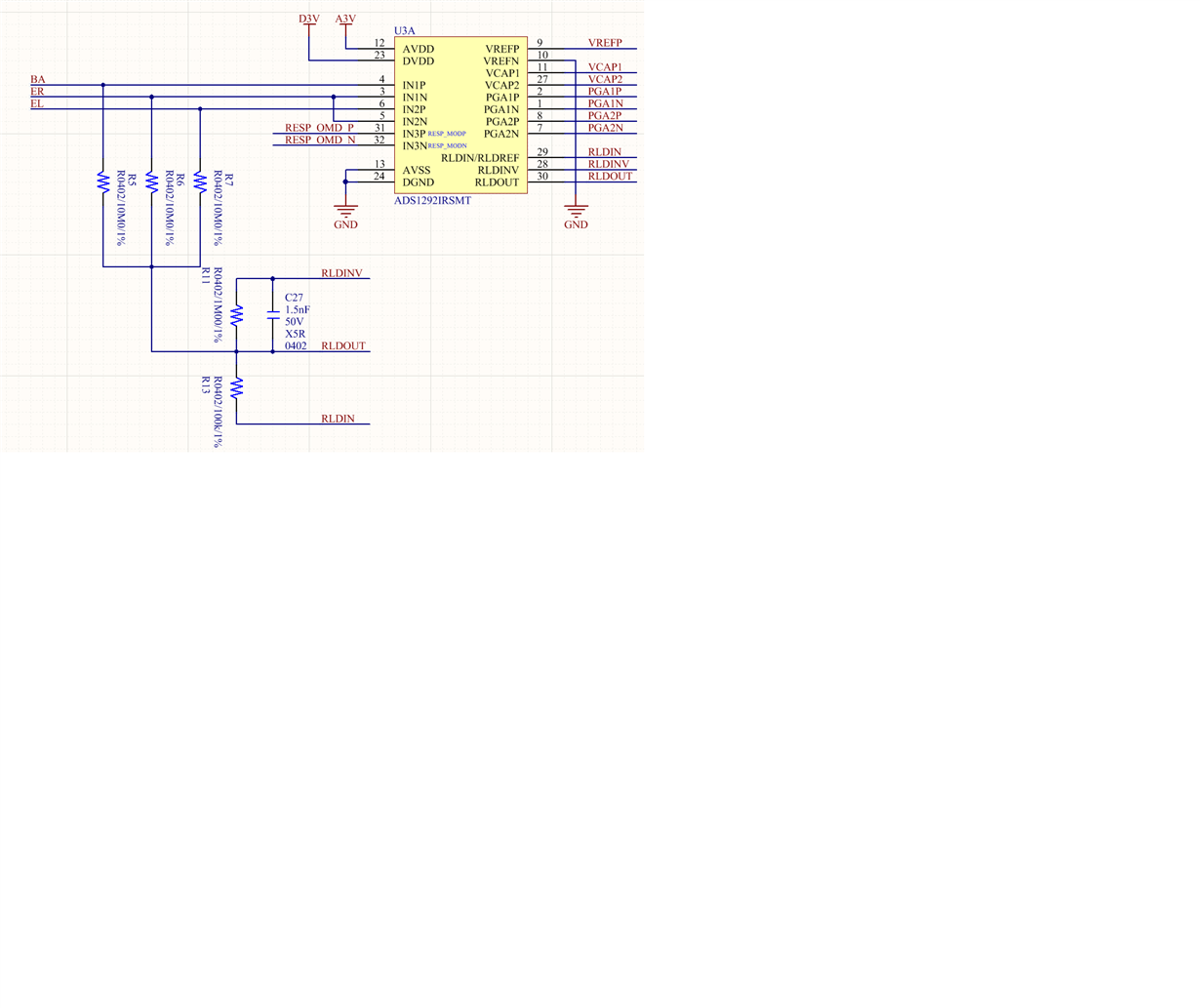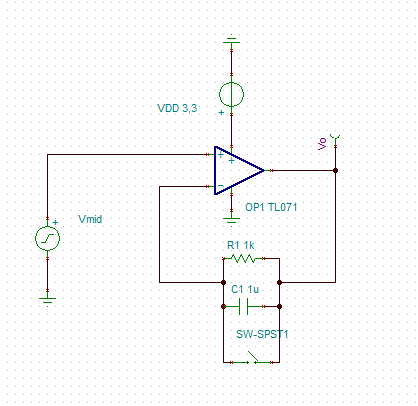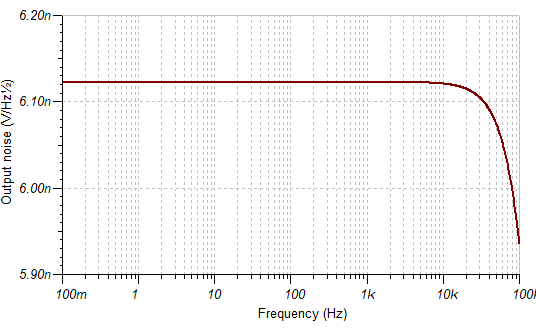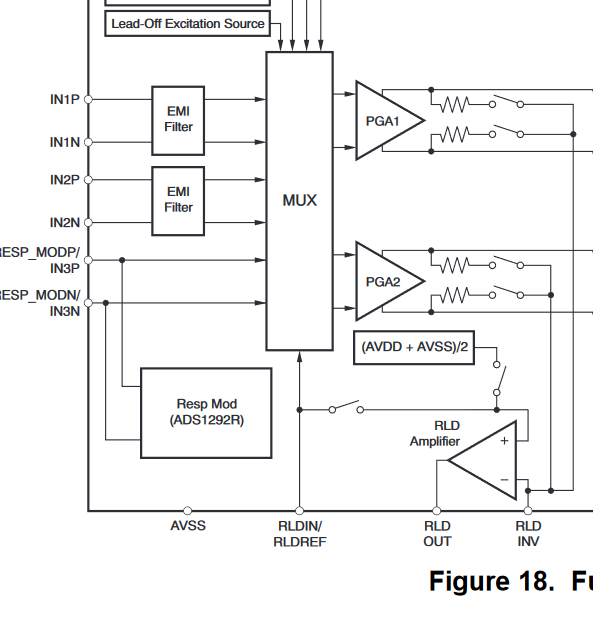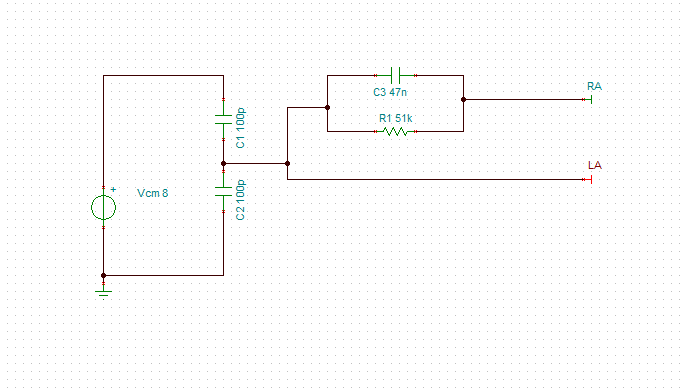Dear TI
My circuit is with only 3 leads BA,ER,EL. Therefore i don't have the lead to connected to RLDOUT.
How should I improve the rejection of 50/60Hz noise.
Will my design bellowed will work?
And the input impedance reduces to 20M, is there any good solution?



